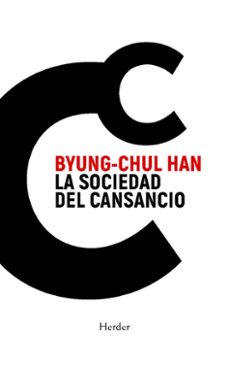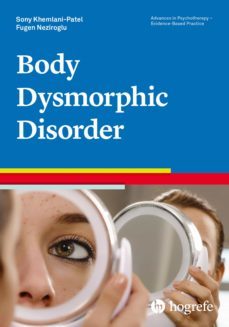Imprescindibles
Más vendidos Libros más leídos eBooks más leídos Todos los libros Todos los libros Autores destacados Series y sagas
Recomendados Libros recomendados Autores destacados Libros que inspiran Vidas con historia LGTBIQ+ English books
Ficción
Literatura Contemporánea Estudios literarios Clásicos Cuentos Poesía Teatro Libros de bolsillo Sagas literarias
Géneros literarios Novela romántica y erótica Novela negra Novela histórica Narrativa fantástica Novela de ciencia ficción Novela de terror Narrativa de humor Narrativa de viajes
No Ficción
Ciencias y tecnología Biología Ciencias Ciencias naturales Divulgación científica Informática Ingeniería Matemáticas Medicina Salud y dietas Formación Idiomas Estilo de vida Libros de Cocina Guías de viaje Narrativa de viajes Deportes Libros de Juegos Manualidades
Humanidades Autoayuda y espiritualidad Ciencias humanas Derecho Economía y Empresa Psicología y Pedagogía Filosofía Sociología Filología Biblioteconomía Estudios filológicos Estudios lingüísticos Estudios literarios Historia y crítica de la Literatura
Infantil
Juvenil
#Jóvenes lectores Narrativa juvenil Clásicos adaptados Libros Wattpad Libros Booktok Libros de influencers Libros de Youtubers Libros Spicy Juveniles Libros LGTBIQ+ Temas sociales Libros ciencia ficción Libros de acción y aventura Cómic y Manga Juvenil Cómic Juvenil Manga Shonen Manga Shojo Autores destacados Jennifer L. Armentrout Eloy Moreno Nerea Llanes Hannah Nicole Maehrer
Libros de fantasía Cozy Fantasy Dark academia Hadas y Fae Romantasy Royal Fantasy Urban Fantasy Vampiros y hombres lobo Otros Misterio y terror Cozy mistery Policiaca Spooky Terror Thriller y suspense Otros
Libros románticos y de amor Dark Romance Clean Romance Cowboy Romance Mafia y amor Romance dramatico Romance dramatico Romcom Sport Romance Otros Clichés Enemies to Lovers Friends to Lovers Hermanastros Slow Burn Fake Dating Triángulo amoroso
Cómic y Manga
Novela gráfica Novela gráfica americana Novela gráfica europea Novela gráfica de otros países Personajes, series y sagas Series y sagas Star Wars Superhéroes Cómics DC Cómics Marvel Cómics otros superhéroes Cómics Valiant
eBooks
Literatura Contemporánea Narrativa fantástica Novela de ciencia ficción Novela de terror Novela histórica Novela negra Novela romántica y erótica Juvenil Más de 13 años Más de 15 años Infantil eBooks infantiles
Humanidades Autoayuda y espiritualidad Ciencias humanas Economía y Empresa Psicología y Pedagogía Filosofía Historia Historia de España Historia Universal Arte Cine Música Historia del arte
Ciencia y tecnología Ciencias naturales Divulgación científica Medicina Salud y dietas Filología Estudios lingüísticos Estudios literarios Historia y crítica de la Literatura Estilo de vida Cocina Guías de viaje Ocio y deportes
FUGEN NEZIROGLU
Recibe novedades de FUGEN NEZIROGLU directamente en tu email
Filtros
Del 1 al 4 de 4
ELSEVIER ESPAÑA, S.A. 9788481742640
YARYURA, JOSÉ; YARYURA, TOBIAS, ; NEZIROGLU, FÜGENLas investigaciones en el área de la anatomía cerebral utilizando el diagnóstico por imagen y el estudio del metabolismo cerebral de la glucosa han s
Ver más
Tapa blanda
POLEMOS 9789879165218
Este libro es el resultado de varias décadas de experiencia de sus autores en el tratamiento e investigación de más de cinco mil casos de Trastornos Obsesivo-Compulsivos (TOC). Debido a que los pensamientos obsesivos, las compulsiones, la duda, las disfunciones motoras y las alteraciones en la percepcion son, a veces, fuente de verguenza para quienes sufren de TOC, es que los autores denominaron a esta enfermedad la epidemia oculta. La acumulacion de sintomas que caracterizan a este Trastorno impide, o al menos dificulta notablemente, el desempeño en las relaciones emocionales y sociales normales, creando dificultades para manejar los eventos de la vida cotidiana con la consecuente repercusion negativa en la vida familiar, escolar y laboral.
Ver más
Tapa blanda
CANGREJAL EDITORES 9789508530134
Tapa blanda
KHEMLANI PATEL, SONY y NEZIROGLU, FUGEN
Hogrefe Publishing GmbH 9781613345009
Learn how to assess and treat body dysmorphic disorder (BDD) Presents the best treatment practices Instructions for novel and advanced treatment strategies Tips for improving client engagement Illustrated with case studies Printable tools for clinical use More about the bookThis volume provides a user-friendly, evidence-based guide to the diagnosis, phenomenology, etiology, and treatment of body dysmorphic disorder (BDD). New and seasoned clinicians can learn about the foundations of CBT for BDD as well as the rationale and instructions for modifying the approach to meet the differences in symptoms found in this client group. The book explores techniques for treatment engagement, including adjusting therapeutic style, appropriate utilization of behavioral and cognitive therapy, family involvement, and motivational interviewing techniques. Other issues associated with BDD are also highlighted: poor insight, comorbidity, concerning rates of suicidality, and ambivalence regarding treatment.The authors outline step-by-step instructions for numerous novel and advanced treatment strategies, including perceptual re-training, attentional training, acceptance and commitment approaches, and ways to manage ongoing desire for cosmetic surgery. Detailed case examples are presented with corresponding treatment guidelines to highlight the variety in clinical presentation and corresponding treatment approaches. Printable tools in the appendices can be used in daily practice.Watch a video interview with the authors
Ver más
eBook
Del 1 al 4 de 4





























